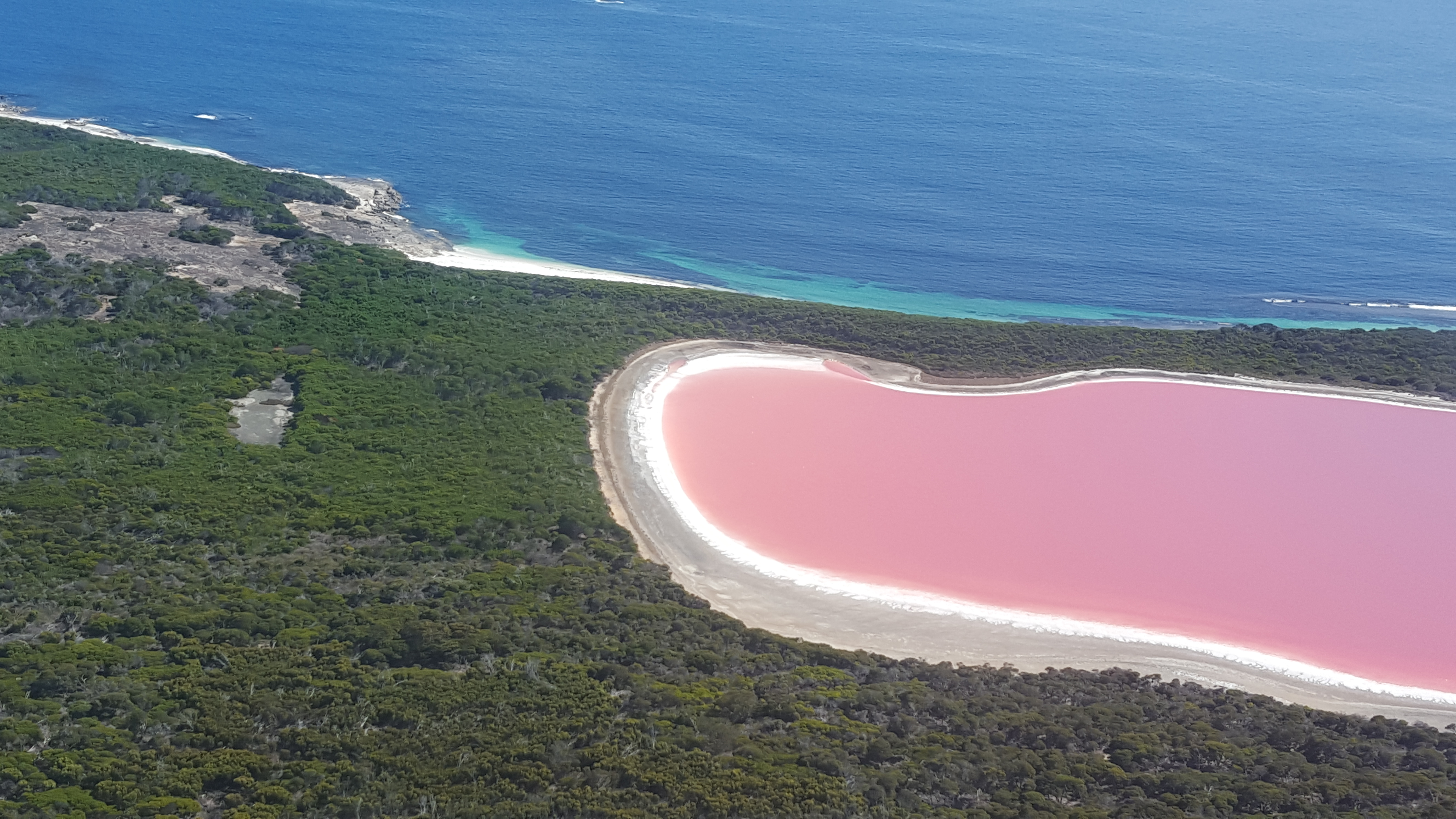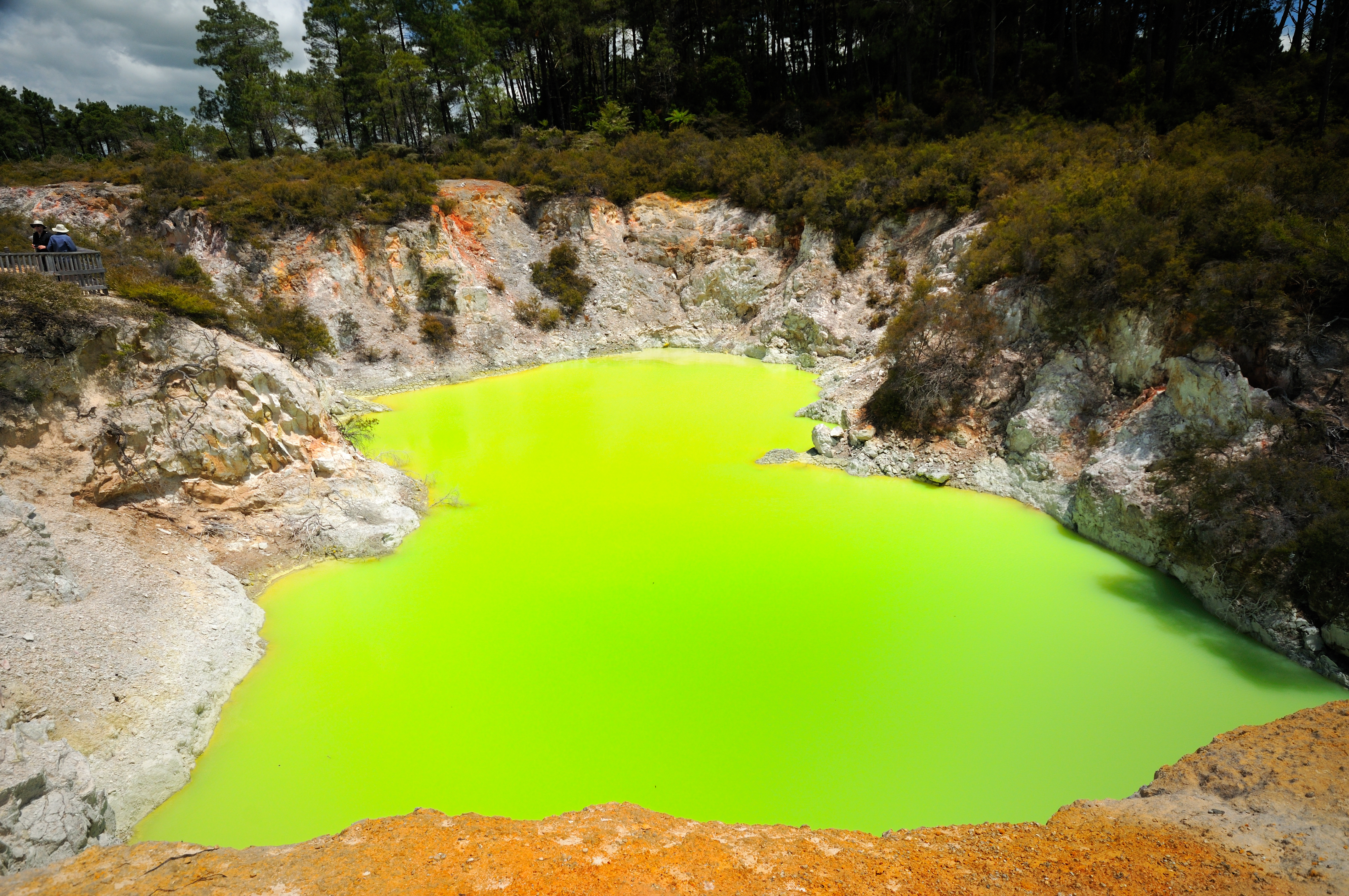Straddling the misleadingly named provinces of East and West Azerbaijan in Iran, Lake Urmia has been an icon of Middle Eastern geography since… well, pretty much since geography was a thing. It features in bronze artworks from the ninth century BCE Neo-Assyrian culture; Ptolemy talked about it in the second century CE, and today, it is a Ramsar site, a UNESCO Biosphere Reserve and a National Park.
In April of 2016, however, something pretty weird happened: it turned blood red. And while the dramatic color change proved temporary, it’s likely to happen more and more in future. So, what’s going on?
Why did Lake Urmia turn red?
As morbid as the sudden palette switch appeared, its cause was actually something pretty everyday – as in, intrinsic to the foundation of life itself levels of ubiquity. It’s algae.
“Previous research suggests that Dunaliella salina is responsible for [the] reddening of Lake Urmia,” Mohammad Tourian, a scientist at the University of Stuttgart, told NASA at the time. “In the marine environment, Dunaliella salina appears green; however, in conditions of high salinity and light intensity, the microalgae turns red.”
It’s a microorganism that could only thrive in a lake like Urmia: the genus is “a characteristic component of the biota of most hypersaline environments,” noted microbiologist Aharon Oren in one 2020 paper.
“Dunaliella species can be found up to the highest salinities,” Oren wrote, “and they are the main or even sole primary producers in saltern crystallizer brines, the Dead Sea, and other environments where the salt concentrations exceed 25–30 percent.”
In fact, the saltier the water, the better Dunaliella salina does its job – which is to create carotenoids. These are important nutrients – some of them are converted into Vitamin A in the body; some act as antioxidants – but more importantly, they’re what’s responsible for the bright, vivid reds, oranges, and yellows in various fruits and vegetables.
And so, in 2016, when the salinity of the water in Lake Urmia was unusually high, the algae bloomed a bright crimson. Intensifying the effect was the presence of Halobacteriaceae – a family of bacteria that also feeds on salt, and uses a red pigment to absorb sunlight for energy.
It’s far from the only time this has happened. The very same algae and bacteria are responsible for some of the most strikingly colored waterways in the world – from the Barbie-pink Lake Hillier in Australia to the bubblegum hues of Senegal’s Lake Retba.

We weren’t kidding. Lake Hillier really does look like that.
But while these vibrant pink hues signal business as usual for those two lakes, for Urmia it was a sign of something far more dire.
What does Lake Urmia look like now?
Urmia’s color change may have been caused by algae and bacteria, but neither of those were unusual presences in the lake. Evidently, something else was going on back in 2016 – so what was it?
Well, we’re afraid the answer is as depressing as it is predictable: thanks to a devastating team-up of climate change and resource mismanagement, the water in Lake Urmia had all but completely disappeared by 2016.
“The lake volume has been decreasing at an alarming rate of 1.03 cubic kilometers [0.25 cubic kilometers] per year,” Tourian, who had recently been analyzing data from several satellites to track how Urmia has changed, told NASA. “The results from satellite imagery revealed a loss of water extent at an average rate of 220 square kilometers [85 square miles] per year, which indicates that the lake has lost about 70 percent of its surface area over the last 14 years.”

Lake Urmia on September 6, 2020 (left) and September 7, 2023 (right).
Image credit: NASA Earth Observatory images by Lauren Dauphin, using Landsat data from the U.S. Geological Survey
Whether or not Urmia survives or dries up forever is a question that we don’t yet know the answer to. A few years ago, it seemed like things were on the up for the lake: after a national outcry at its ailing health, the government made restoring Urmia a flagship policy, setting in motion agricultural reforms aimed at reducing water usage, engineering schemes like upgrading wastewater facilities, and construction projects to bring in water from other nearby sources. Nature herself threw the lake a bone, too, with intense rainfall in 2018 and 2019 swelling the waters to almost twice their previous size over two years.
But just as fast as the reprieve was granted, it seems to have run out again. By autumn 2023, Urmia was little more than an enormous, dry salt flat – and right now, it’s basically on life support.
“We are witnessing a tragedy take place right before our eyes,” Kaveh Madani, director of the United Nations University Institute for Water, Environment and Health, told Forbes earlier this year.
“Many people have fought for the lake’s restoration over the years,” Madani said, “but Iran is water bankrupt, and the problem will keep getting worse if policies remain the same.”
Rainbow waters
While Lake Urmia’s color change was a warning sign, many other lakes around the world boast pretty glorious hues for much more innocent reasons.
Like Urmia, Chott el Djerid in Tunisia is an endorheic salt lake that is frequently on the brink of complete nonexistence, and, also like Urmia, its water levels are often a vivid red. Given that, you might expect that the reason for Chott el Djerid’s scarlet color might be the same algae as in Urmia – but the real culprit is actually much simpler. It’s salt.
“Chott el Djerid is (mostly) an enormous plain with a harsh desert climate and almost total lack of natural resources – including fresh water,” notes Atlas Obscura. “Driving across the main road […] it’s impossible not to stop and admire the rainbow-colored salt deposits and small lakes that have water even in the driest summer days. Unexpectedly, the salty water varies in color from light green to gentle pink and vibrant orange.”
Similarly hued is the Betsiboka River in Madagascar – this time thanks to, um, rust. “Historical maps of Madagascar describe the sandy to clay-rich soils around the Betsiboka River as terres rouges, or “red lands”,” explains NASA’s Earth Observatory. “They were describing laterites – soils rich in iron oxides – that form in tropical climates from the chemical breakdown of iron-rich rocks.”
Sitting very much at the opposite end of the spectrum, though, is the ominously named Devil’s Bath in New Zealand. And it looks like… well, let’s just say the name does it justice.

Devil’s Bath, located in the Wai-O-Tapu Thermal Wonderland in Rotorua, New Zealand.
Image credit: repox/Shutterstock.com
The Halloweenish color of the pool is due to the presence of sulfur, so the water smells as demonic as it looks; it’s also slightly acidic and the temperature of a warm bath – you know, if you were into bathing in vinegar. It’s actually one of many geothermal features found in Tikitere, also known as “Hell’s Gate”, and it’s by far one of the most chill. Which says a lot.
Take the Steaming Cliffs pool, for example, which is found on the other side of the area. With water temperatures topping 120°C (248°F), it’s hot enough to cause serious burns if it splashes you – which it could, because it sometimes erupts, throwing water more than three meters into the air.
Perhaps most hellish of all is the “Sulphur Bath” – 98°C (208°F), bright yellow, and a pH of less than 2, jumping into this pool would be akin to swimming in a big bath full of boiling stomach acid.
Still, as infernal as all this sounds on paper, in real life Tikitere has a much more wholesome reputation. Still owned by the local Ngāti Rangiteaorere Māori iwi, “the mud and waters of Tikitere have soothed battle-scarred bodies for centuries,” the area’s website says.
“It’s more than just mud or steam,” it adds. “It’s a place of inspiration.”
Source Link: Why Did Lake Urmia Suddenly Turn Blood Red?